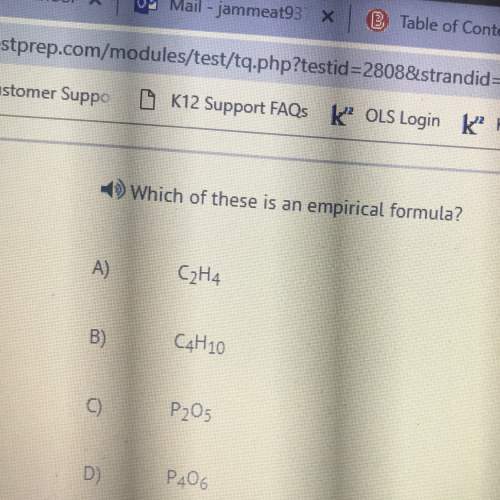
Chemistry, 24.10.2019 00:50 lizzyhearts
The electron in an (unbound) hydrogen atom (h(g)) is excited from the ground state to the n=3 state. which of the following statements are true and which are false. 1) the first excited state corresponds to n=3. 2) the wavelength of light emitted when the electron drops from n=3 to n=2 is shorter than the wavelength of light emitted if the electron falls from n=3 to n=1. 3) it takes more energy to ionize the electron from n=3 than it does from the ground state. 4) the wavelength of the light emitted when the electron returns to the ground state from n=3 is larger than the wavelength of light absorbed to go from n=1 to n=3. 5) the electron is farther from the nucleus on average in the n=3 state than in the ground state.

Answers: 1


Other questions on the subject: Chemistry

Chemistry, 21.06.2019 20:30, Kaylinne1181
This chart represents the melting point of several substance. what besy explains the high melting point of the salt?
Answers: 2

Chemistry, 21.06.2019 22:30, kingteron5870
Ionic compounds are made of ions, and yet the overall charge of an ionic compound is neutral. why?
Answers: 1

Chemistry, 22.06.2019 06:10, andybiersack154
Explain the relationship between forward and backward reactions in equilibrium, and predict how changing the amount of a reactant (creating a tension) will affect that relationship.
Answers: 1

Chemistry, 22.06.2019 06:20, stephliu721
What is a property of a double replacement reaction
Answers: 1
You know the right answer?
The electron in an (unbound) hydrogen atom (h(g)) is excited from the ground state to the n=3 state....
Questions in other subjects:




English, 05.07.2020 01:01










